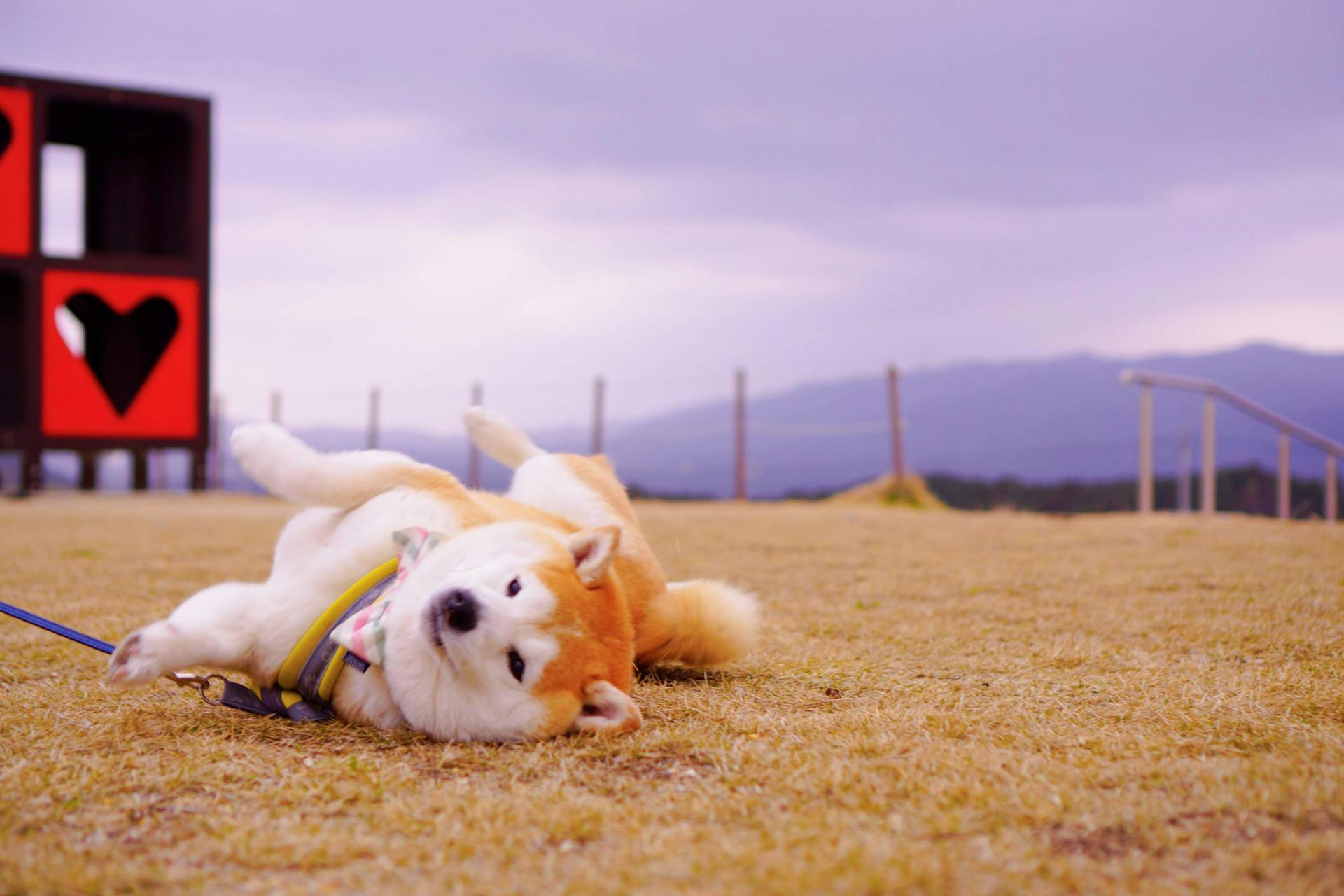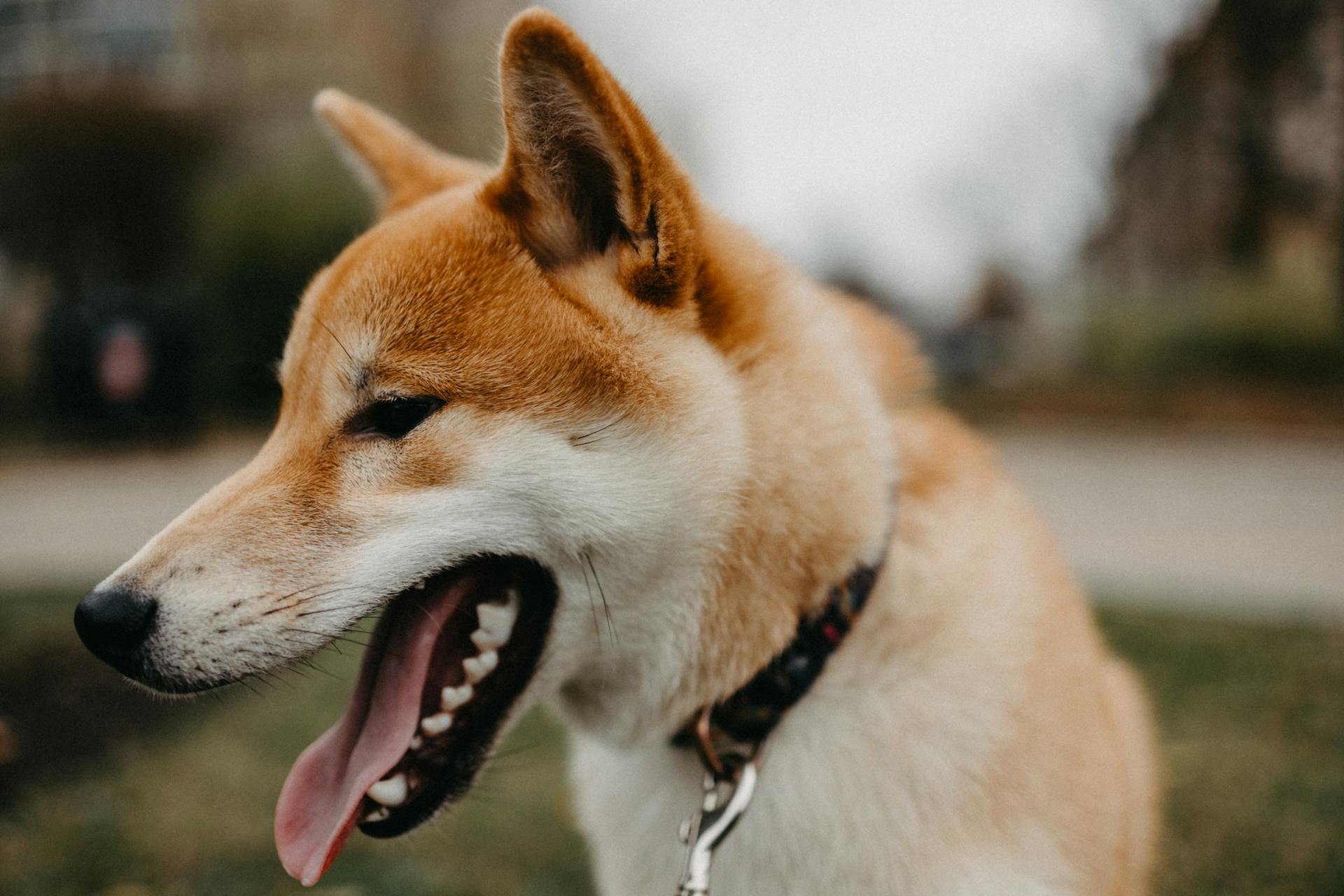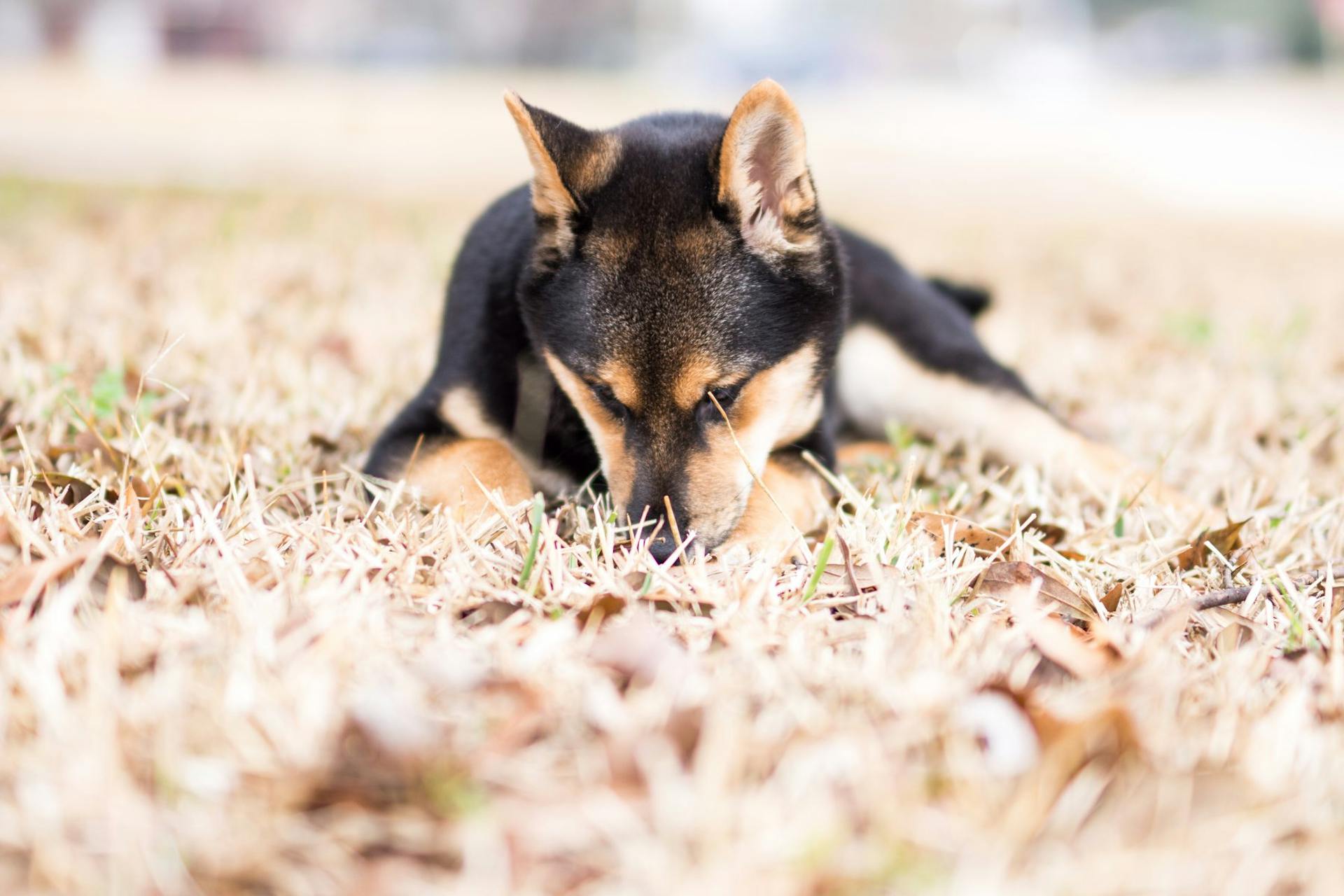
The Mame Shiba Inu is a rare and unique breed of dog that originated in Japan.
They are a smaller version of the Shiba Inu breed, weighing between 7-15 pounds.
One of the most distinctive features of the Mame Shiba Inu is its fox-like appearance, with a curled tail and erect ears.
These dogs are known for their independent nature, making them a great fit for experienced dog owners.
Their lifespan is relatively long, typically living between 12-15 years.
Appearance
The mame shiba inu has a unique appearance that sets it apart from other dog breeds. Their body frame is compact with well-developed muscles.
The mame shiba inu has a double coat, which means they have two layers of fur. The outer coat is stiff and straight, while the undercoat is soft and thick.
Fur is short and even on the foxlike face, ears, and legs. Guard hairs stand off the body and are about 4 to 5 cm long at the withers, protecting their underlying skin and repelling rain or snow.
Their tails are a defining characteristic, standing open in a brush and slightly longer than the rest of their fur. The tail hair is a key part of their unique appearance.
The mame shiba inu comes in a variety of colors, including red, black, and sesame. The urajiro marking, which is a cream to white ventral color, is required in specific areas for all coat colors.
Here are some key areas where the urajiro marking is visible:
- On the sides of the muzzle
- On the cheeks
- Inside the ears
- On the underjaw and upper throat
- Inside of legs
- On the abdomen
- Around the vent
- The ventral side of the tail
Temperament & Intelligence
The Mame Shiba Inu is a spirited and bold breed, known for its independent nature and high intelligence. They can be wary of strangers and may bark at them unless they receive plenty of socialization.
These dogs are intelligent and capable of learning many tasks, but they can be stubborn and strong-willed, making training more difficult. They require a lot of exercise and stimulation to prevent anxiety and undesirable behaviors.
One of the most distinctive characteristics of the Mame Shiba Inu is its "spirited boldness" (悍威, kan'i), which is a key aspect of its temperament. This trait is deeply rooted in the breed's history and is a result of its close relationship to the wolf.
A survey of experts classified the Mame Shiba Inu as having "high aggression, high reactivity and medium trainability", which is likely due to its wolf-like ancestry. This means that owners need to be patient and consistent when training their Mame Shiba Inu.
Despite their strong will, Mame Shiba Inus are loyal and affectionate with their families, making them wonderful companions. They are also sensitive to the senses, which helps them in hunting and tracking.
History
The Shiba Inu has a rich history that dates back to the prehistoric Jōmon period of Japanese history. Dogs with a similar appearance to the Shiba Inu were represented in dogū made during this time.
The breed was originally bred to hunt and flush small game, such as birds and rabbits, in the mountainous areas of the Chūbu region. Shiba Inus were highly valued for their skills and lived in these regions.
From 1912 to 1926, almost no pure Shiba Inu remained due to the popularity of crosses between western dog breeds and native Japanese breeds. The breed nearly became extinct during World War II due to wartime food shortages and outbreaks of distemper in the 1950s and 60s.
The Shiba Inu was recognized as a Natural Monument of Japan in 1936, and the first Japanese breed standard for the Shiba, the Nippo Standard, was published in 1934.
On a similar theme: Shiba Inu Highest Market Cap
History
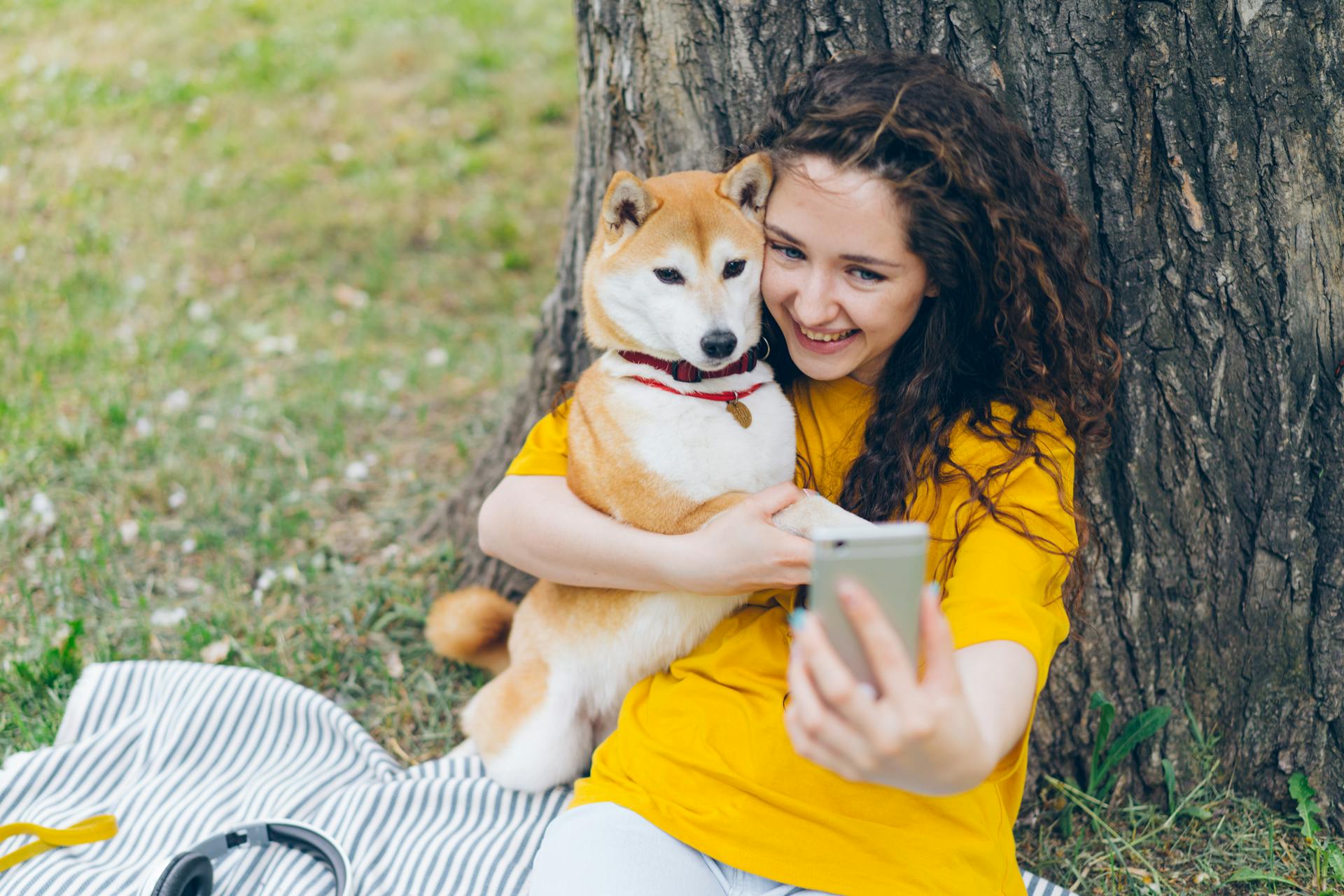
The Shiba Inu has a rich history that dates back to the prehistoric Jōmon period of Japanese history, where dogs with a similar appearance were represented in dogū.
These ancient dogs were bred to hunt small game in the mountainous areas of the Chūbu region.
The Shiba Inu nearly became extinct during World War II due to food shortages and outbreaks of distemper in the 1950s and 60s.
Only three bloodlines survived: the Shinshu Shiba from Nagano Prefecture, the Mino Shiba from the former Mino Province, and the San'in Shiba from Tottori and Shimane Prefectures.
The Shinshu Shibas were small and red in color, while the Mino Shibas had thick, prick ears and a sickle tail.
The San'in Shibas were larger and tended to be black.
In 1934, the first Japanese breed standard for the Shiba, the Nippo Standard, was published.
The Shiba Inu was recognized as a Natural Monument of Japan in December 1936.
Here's an interesting read: Long Term Dog Boarding San Antonio

The first Shiba Inu was brought to the United States in 1954 by an armed service family.
The breed was recognized by the American Kennel Club in 1992 and added to the AKC Non-Sporting Group in 1993.
The Shiba Inu is now primarily kept as a pet both in Japan and abroad, and is the number one companion dog in Japan.
Explore further: Shiba Inu Price Japan
History of Small Dogs
Small dogs have a rich history in Japan, where small Shiba Inus were kept by hunters in mountainous areas as hunting dogs for small animals like rabbits and raccoon dogs.
These small dogs were incredibly skilled at their job, able to catch a variety of prey including martens and foxes.
Their small size allowed them to navigate dense forests and tight spaces with ease, giving them a unique advantage over larger hunting dogs.
In fact, small Shiba Inus were even used to hunt mujina, a type of small bear that lived in caves, showing just how versatile and effective they were as hunting companions.
Japan's Oldest Kennel
Japan's Oldest Kennel was founded in 1872, making it a historic landmark in the country.
Located in Tokyo, this kennel has been a hub for dog breeding and training for over 140 years. It's a testament to Japan's long-standing love affair with dogs.
The kennel has been home to many iconic breeds, including the Japanese Akita and the Shiba Inu. These breeds are not only beloved in Japan but have also gained international recognition.
In the early 20th century, the kennel introduced Western breeds to Japan, further expanding the country's canine diversity. This move marked a significant shift in Japan's dog breeding practices.
Today, Japan's Oldest Kennel continues to play a vital role in promoting responsible dog breeding and ownership practices.
Additional reading: Big Shiba Inu Breed
What Does It Mean?
The term Mame Shiba Inu is a fascinating one, and it's not just a cute nickname. In Japanese, mame translates to beans, so Mame Shiba Inus are essentially "bean-sized" dogs.
These little dogs have a unique name that reflects their small size, and some people use the term mini or miniature Shiba Inus instead of Mame.
For another approach, see: Long Term Dog Boarding Nj
KC Japan Officially Approved
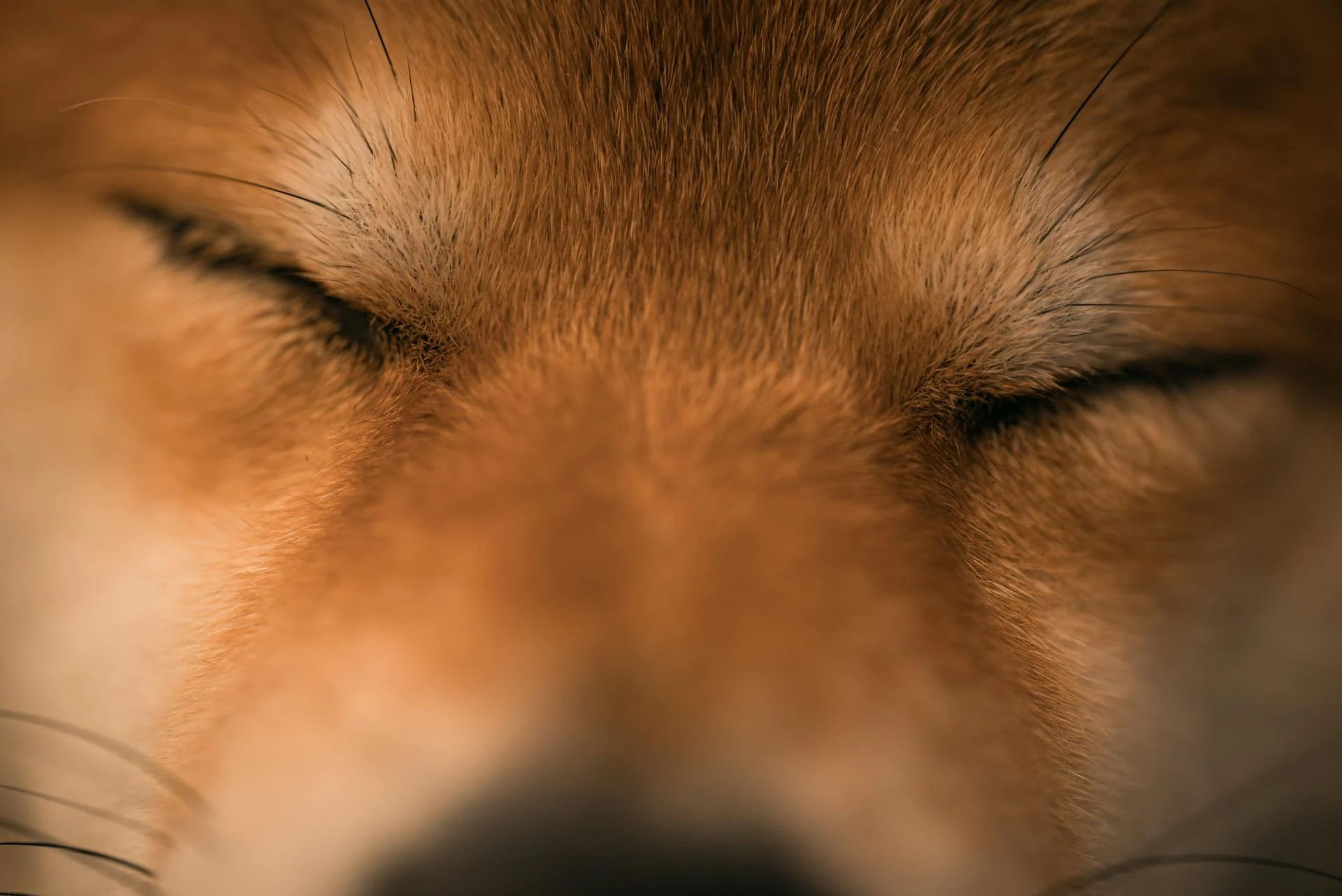
KC Japan was the first organization in the world to officially recognize the Mame-Shiba as a pedigree-issuing organization.
The Mame-Shiba was still not recognized as a breed by some organizations at the time of its recognition by KC Japan.
KC Japan created a breed standard for the Mame-Shiba, which is a crucial step in the recognition process.
Broaden your view: Akitas in Japan
Health
The Shiba Inu's health is a top concern for many owners, and for good reason. The breed is prone to several health issues.
One of the most common health problems in Shiba Inus is patella luxation, a condition where the kneecap slips out of place. This affects about 35% of Shiba Inus surveyed in Japan.
Glaucoma is another issue that affects Shiba Inus, with 33% of cases in Japan being attributed to the breed. This is despite Shiba Inus making up only 2.7% of the total population studied.
Intact bitches are also more likely to experience pyometra, a uterine infection. This is a serious condition that requires prompt veterinary attention.
Canine atopic dermatitis is a common problem in Shiba Inus, causing skin irritation and discomfort.
Lifespan
The Mame Shiba Inu is known for its remarkable longevity. A review of cemetery data in Japan found that this breed has a life expectancy of 15 and a half years, which is the greatest of any breed.
This impressive lifespan is a testament to the breed's overall health and well-being. A 2024 UK study found a life expectancy of 14.6 years for the breed, which is significantly higher than the average lifespan of purebred dogs.
Compared to other breeds, the Mame Shiba Inu's lifespan is truly remarkable. The average life expectancy of purebred dogs is 12.7 years, while crossbreeds have an average lifespan of 12 years.
Curious to learn more? Check out: 100 Years Ago Original Boston Terrier
In Popular Culture
The Shiba Inu has become a beloved breed in online culture, especially in Japan. Despite not being a popular breed outside of Japan, it has gained a significant presence on the internet.
The Shiba Inu's internet fame can be attributed to the Doge meme, which originated in 2013 and features a Shiba Inu named Kabosu. The meme's popularity led to the creation of a cryptocurrency called Dogecoin, which features Kabosu's image on its logo.
Related reading: Shiba Inu Meme Dog Died
The Shiba Inu's online popularity has also led to the creation of another cryptocurrency called Shiba Inu. The breed's internet fame is not limited to just one meme, as another Shiba Inu named Cheems went viral during the COVID-19 pandemic and gained worldwide attention.
A Shiba Inu's life is not just about internet fame, but also about its origins. The Shiba Inu is a dog breed originating in Japan, and it's often referred to as Shibe in memes.
Here are some interesting facts about Shiba Inus in popular culture:
- The Shiba Inu breed has had a significant presence in online culture since at least 2010, according to Jamie Cohen, an assistant professor of media studies.
- The Shiba Inu's internet fame has led to the creation of several cryptocurrencies, including Dogecoin and Shiba Inu.
- A Shiba Inu named Cheems gained worldwide attention during the COVID-19 pandemic and became a beloved internet celebrity.
Getting a Dog
Getting a dog can be a thrilling experience, but it's essential to consider your motivations. Don't buy a Mame Shiba Inu.
Rescuing a Shiba Inu from a shelter is a great way to give a loving home to a dog in need. You can also consider purchasing from a reputable breeder who prioritizes the dog's health and temperament.
A good breeder will have their dogs involved in dog shows, which is a sign of their commitment to the breed's integrity. Shiba Inus are already stunning dogs with a rich history.
Responsible pet ownership means choosing a dog that's already a wonderful breed, rather than trying to "shrink" it for convenience.
Care and Maintenance
Mini Shiba Inus are meticulous groomers that need regular brushing to remove loose fur and prevent matting. Brush them at least once or twice a week using a slicker brush or a grooming tool suitable for double-coated breeds.
They don't need many baths unless they get into something, but you'll need to trim their nails if you hear them clicking on the floor as they walk. Regular nail trimming will help prevent scratching and damage to furniture.
Brushing their teeth as frequently as possible using dog-safe toothpaste is also a must to keep them healthy and happy.
Exercise
Exercise is crucial for your Mini Shiba Inu's happiness and health. They need 30–60 minutes of daily exercise.
Leashed walks are a great way to stimulate their mind and body. Fetch, hide and seek, and tug of war are also excellent options to keep them engaged.
A safe, fenced-in area is essential for playtime, as they love to run off chasing animals or even cars. Adjust the intensity of the activity to suit their age.
Regular exercise can help reduce the amount of chasing small animals they do, making it a great way to prevent unwanted behavior.
Here's an interesting read: Shiba Inu Exercise Needs
Grooming
Grooming is a crucial aspect of caring for your Mini Shiba Inu. Regular brushing is essential to remove loose fur and prevent matting.
You'll need to brush your Shiba Inu at least once or twice a week using a slicker brush or a grooming tool suitable for double-coated breeds. Their double coat consists of a dense undercoat and a stiff outer coat.
Their grooming needs are quite particular, and they're often described as cat-like in their habits. They won't need many baths unless they get into something messy.
You'll also need to trim their nails if you hear them clicking on the floor as they walk. This will help keep them comfortable and prevent any potential health issues.
Brushing their teeth as frequently as possible using a dog-safe toothpaste is also a must. Their upright ears aren't as prone to infection as floppy ones, but you'll still need to check them often for ear mites and wax build-up.
Explore further: How Often Can You Put Flea Medicine on a Dog
Training
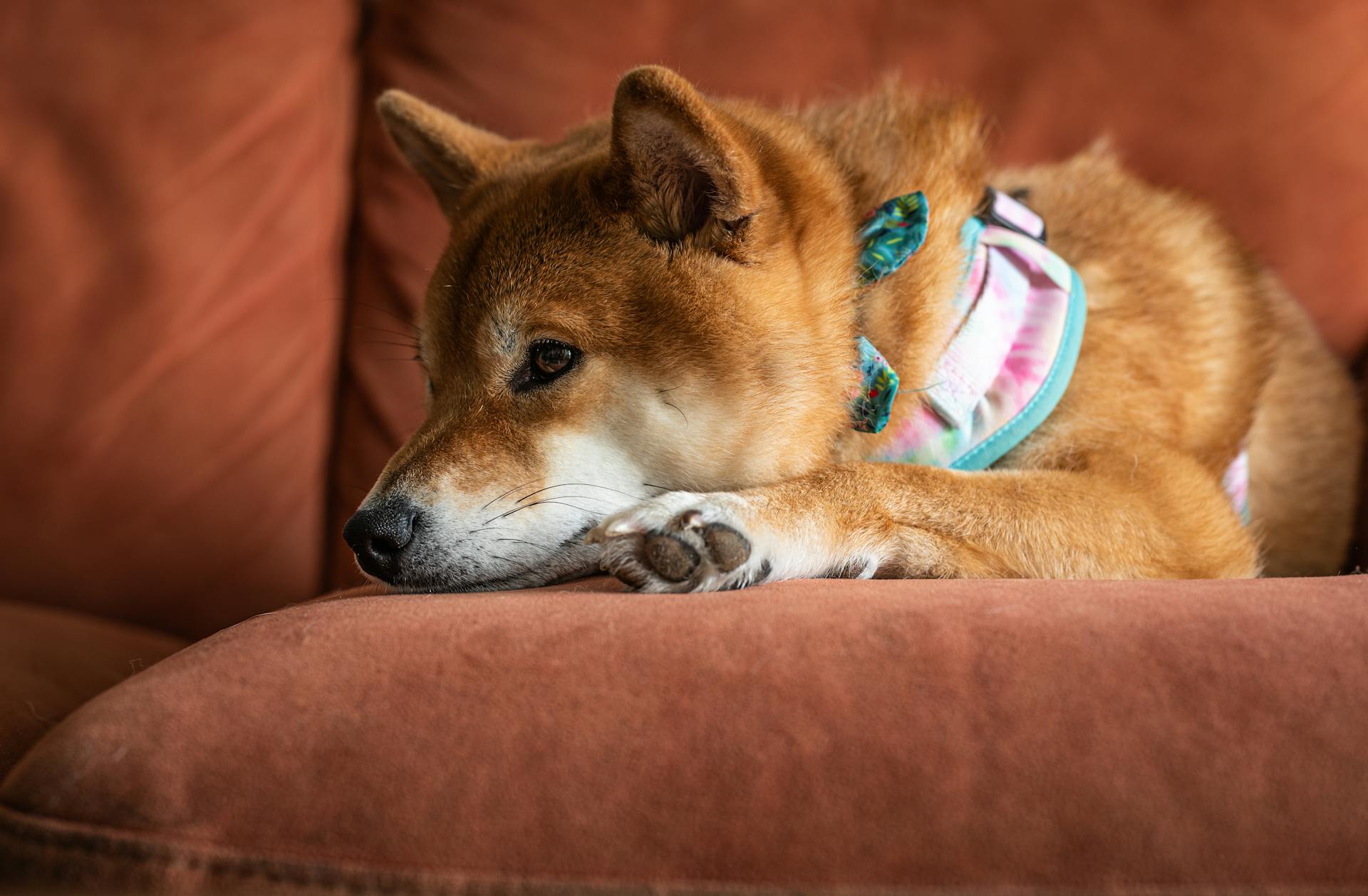
Training is essential for your Mini Shiba Inu to get into a routine, which makes training much easier.
Start training your dog as early as possible to establish a consistent schedule. Keep training sessions short and at the same time every day.
Positive reinforcement is the most effective method of dog training, which involves giving treats and praise when your dog follows a command.
It can take several weeks for a dog to learn a new trick, so be patient and avoid getting frustrated, which can upset your pet and make training even harder.
What Is a?
A Mame Shiba Inu is a Shiba Inu dog that has been intentionally bred to be smaller.
These dogs will never be recognized by Shiba Inu breed clubs or Shiba Inu associations.
This lack of recognition means that breeders often don't follow health or temperament considerations.
As a result, Mame Shiba Inus are a popular target for irresponsible breeders.
This can lead to Shiba Inu puppies suffering from health issues, both physical and mental.
Size and Origin
The Mame Shiba Inu is a small dog breed that originated in Japan, where breeding of Mame Shiba Inu started. The general consensus is that this breeding started in Japan.
Smaller dogs have been highly coveted in Japan for many years, likely due to smaller living areas in the city. Dogs such as Chihuahua's and Toy Poodles became hot sellers in the puppy market.
Mame Shiba Inus were bred to be smaller to accommodate the growing demand. This was done by selecting Shiba Inus with smaller body sizes through generations of crossbreeding.
Small Shiba Inus have always existed in Japan, kept by hunters in mountainous areas as hunting dogs for small animals.
Frequently Asked Questions
What does Mame Shiba mean?
Mame Shiba is a pun combining the Japanese words for "bean", "Shiba Inu", and "trivia", literally translating to "beans of knowledge". It's a clever name that hints at the game's focus on trivia and fun facts.
What is the difference between a Mame Shiba and a normal Shiba Inu?
The main difference between a Mame Shiba and a Shiba Inu is their size, with Mame Shibas being significantly smaller. Adult Mame Shibas typically reach a height of 30-34 cm for males and 28-32 cm for females.
How much does a Mame Shiba Inu cost?
A Mame Shiba Inu typically costs between $1500 and $3500 from a reputable breeder, which may or may not include additional costs for vaccinations, spaying/neutering, and microchipping.
Featured Images: pexels.com
